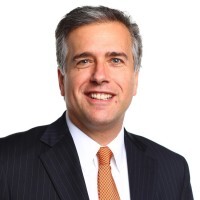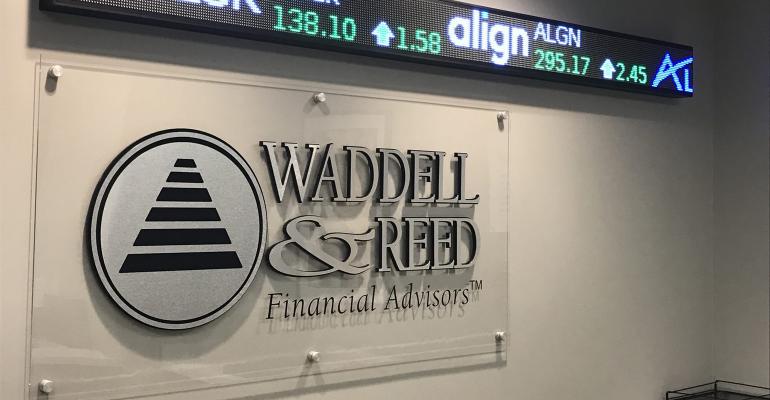Earlier this month, Waddell & Reed appointed Eric Meltzer as chief technology officer of the firm, where he will oversee digital efforts on both the asset management and wealth management sides of the business. Before moving to Waddell & Reed, Meltzer served as CTO and COO at OppenheimerFunds, as well as CTO at Putnam Investments. In his new role and as a member of the executive leadership team, Meltzer will report to Brent Bloss, president of Waddell & Reed Financial. In the midst of this transition, WealthManagement.com asked Meltzer to lay out his vision for the future of technology at his new workplace.
WealthManagement.com: What are your goals for technology at Waddell & Reed?
Eric Meltzer
Eric Meltzer: I began in an interim CTO position right at the onset of COVID-19. My first exposure really was making sure everybody could work at home just as effectively as they did in the office. Within a matter of a couple short weeks, if not even earlier than that, we had probably close to 99% of the workforce working from home, with nary a loss of productivity.
The organization’s technology is good. What I want to do is take a lot of the really great stuff that's been going on and take them to the next level—and really position technology as a competitive advantage and an added value to the business units that we support—whether it's on the wealth management side or on the asset management side.
There’s already been a whole strategic initiative to improve the experience that we currently are providing to the financial advisors who are part of the Waddell and Reed network: providing a better platform, more insightful information, more timely information to individuals (whether it's about their customers or leads). It's really providing a client-centric experience for them.
WM: How does your experience at OppenheimerFunds prepare you for the client-first goal you're setting for yourself?
EM: There was a big sales and marketing organization at OppenheimerFunds, so while Oppenheimer sold to financial intermediaries, it was really supporting those financial advisors that Waddell & Reed have. A lot of the experience was around providing better product information, providing more timely information or data, and moving into more predictive analytics from a lead generation perspective.
A lot of the same problems faced in asset management correlate to the wealth management side of the house. Whether you're talking about digital transformation, enhanced cybersecurity, better reporting online—there are a lot of parallels between the two.
I'm energized because, while most of my career has been in asset management, there are a lot of parallels. I'm a technologist. I'm a continuous learner. I'm always out there wanting to be challenged and learning new things.
WM: What do you expect will be the biggest challenge as you take on both asset and wealth management?
EM: Making sure that the priorities of the firm are balanced and that we're able to support them.
There's a lot of initiatives going on in the asset management side of the house. So, making sure we have the proper balance and that we have the right people (from a technology perspective) and the right skill sets and the right jobs.
What we're doing to mitigate risk is really standardizing, more firmly, the technology stack within the organization. We're investing in our employees from the standpoint of working with learning and development, and HR, around making sure that our people are trained. Not only from a technology perspective, but from a business perspective, as well.
It's about evolving the culture and empowering IT more, but holding them accountable at the same time. The culture is great—don't get me wrong. At Waddell & Reed it's a really fabulous culture, but the thing that technologists always have to be concerned about is continuous learning. It's continuous education.
WM: When I think of technology-forward companies, Waddell & Reed isn’t top of mind. Is that something you’re setting out to change? How do you intend to shape that culture?
EM: One of the tenants of the firm—especially with our vision going forward—is that data and technology is a strategic asset to leverage. The whole executive leadership team understands and sees technology as something that we can leverage to provide a competitive advantage for the organization.
While today Waddell & Reed may not be recognized as such, I believe that we will be in the future. We do that through investing in our staff. We do that through innovation, especially in technology; I did at OppenheimerFunds.
Innovation is a ground up kind of thing. Innovation doesn't come from the top.
It's creating an environment where people are constantly challenged or speaking up or are contributing ideas. It's a bottom-up continuous improvement in their jobs and what they're doing, whether it’s automation or processes. That’s how you start that whole momentum and that process around really changing the culture and changing how technology is perceived and what it can do within an organization.
WM: With the technology development that you’ll be leading, will it be in-house or a product of outside relationships?
EM: It's a combination. Obviously, some of it is being done in-house and some of it is leveraging some technology partners.
WM: How does it break down? Is it majority in-house or the majority outside?
EM: It's probably about 50-50.
WM: Is Waddell & Reed’s technology significantly different between the wealth and asset management sides of the business?
EM: It's not significantly different. Even if you do have a defined stack, and a lot of firms do, you don't get there overnight. It's something that you evolve over time. It's not like we're going to embark upon a strategic initiative to migrate from this platform to that technology platform.
We want to make sure that on a go-forward basis, wherever and whenever possible, we are standardized so that we can create a lower total cost of ownership.
WM: When it comes to utilizing the data that you have on hand, how do you go about doing that?
EM: It's multifaceted. It's leveraging tools that already exist here, like Tableau or Alteryx or reporting tools.
It's also creating and making sure that we create a whole services layer of service-oriented architecture and microservices. You create this plug-and-play mentality, so that the business can have a service layer sitting on top of your data and you can serve up the data.
Then you have consistency and you can integrate it with different tool sets so that everybody can then basically feed upon it themselves, whether it's through a tool, whether it's through an Excel plug-in, for example. It's creating a layered services environment.
WM: What does success look like for you at the end of 2021, when it comes to today’s tech initiatives?
EM: Some of them are multiyear, but I think that I judge success twofold. One, to continually incrementally improve our business capability.
Another is the business coming to technology more, from the standpoint of better and deeper engagement with our business partners, whether it's on the wealth side or the asset management side. That proves to me that technology is providing a value-add to our business—where partners are seeking us out.
This interviewed has been edited for clarity and concision.





